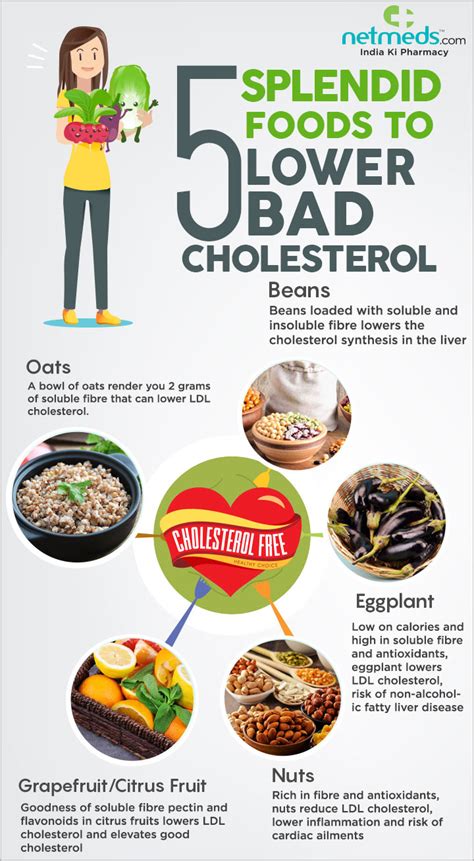How To Lower Bad Cholesterol: A Comprehensive Guide
High cholesterol can significantly increase your risk of heart disease and stroke. Understanding how to lower your bad cholesterol (LDL cholesterol) is crucial for maintaining good health. This guide provides practical steps and lifestyle changes you can implement to achieve healthier cholesterol levels.
Understanding Cholesterol
Before diving into solutions, let's clarify what cholesterol is. Cholesterol is a fatty substance your body needs for building healthy cells. However, too much low-density lipoprotein (LDL) cholesterol, often called "bad" cholesterol, can build up in your arteries, leading to plaque formation and narrowing of the blood vessels. This process, known as atherosclerosis, restricts blood flow and increases the risk of heart attack and stroke. Conversely, high-density lipoprotein (HDL) cholesterol, or "good" cholesterol, helps remove LDL cholesterol from your arteries.
Lifestyle Changes to Lower Bad Cholesterol
Fortunately, many lifestyle modifications can effectively lower your LDL cholesterol levels. These changes are often more effective than medication alone and contribute to overall better health.
1. Diet Plays a Crucial Role
What to Eat:
- Fruits and Vegetables: These are packed with fiber, vitamins, and minerals that support heart health. Aim for a variety of colorful produce.
- Whole Grains: Opt for whole-wheat bread, brown rice, and oats over refined grains. They're rich in soluble fiber, which helps bind cholesterol and remove it from your body.
- Lean Protein: Choose fish (especially fatty fish like salmon), chicken breast, beans, and lentils over red meat and processed meats.
- Healthy Fats: Incorporate foods rich in monounsaturated and polyunsaturated fats like avocados, nuts, seeds, and olive oil.
What to Avoid or Limit:
- Saturated and Trans Fats: These are found in red meat, processed foods, fried foods, and baked goods. They significantly raise LDL cholesterol.
- Cholesterol-Rich Foods: While dietary cholesterol's impact is less significant than previously thought, limiting foods high in cholesterol like organ meats and egg yolks can still be beneficial.
- Processed Foods: These are often high in sodium, unhealthy fats, and added sugars, all of which can negatively impact cholesterol levels.
- Sugary Drinks: Soda, juice, and other sugary beverages contribute to weight gain and can negatively affect cholesterol levels.
2. Embrace Regular Physical Activity
Regular exercise is a powerful tool in lowering bad cholesterol and raising good cholesterol. Aim for at least 150 minutes of moderate-intensity aerobic exercise or 75 minutes of vigorous-intensity aerobic exercise per week. This could include brisk walking, jogging, swimming, cycling, or any activity that gets your heart rate up.
3. Maintain a Healthy Weight
Being overweight or obese significantly increases your risk of high cholesterol. Losing even a small amount of weight can make a substantial difference in your cholesterol levels. Combine a healthy diet with regular exercise for optimal weight management.
4. Quit Smoking
Smoking damages blood vessels and increases LDL cholesterol. Quitting smoking is one of the best things you can do for your heart health and overall well-being. Seek support if needed; many resources are available to help you quit.
5. Manage Stress
Chronic stress can contribute to high cholesterol. Find healthy ways to manage stress, such as yoga, meditation, spending time in nature, or engaging in hobbies you enjoy.
When to Consult a Doctor
If you have high cholesterol, it's crucial to consult your doctor. They can perform tests to assess your cholesterol levels, discuss your risk factors, and recommend the best course of action, which may include medication in addition to lifestyle changes. This article is for informational purposes only and does not constitute medical advice.
Boosting Good Cholesterol (HDL)
While focusing on lowering LDL is primary, boosting HDL is equally important. The same lifestyle changes mentioned above (diet, exercise, weight management, quitting smoking, stress reduction) also help raise HDL levels.
By adopting these strategies, you can significantly improve your cholesterol profile and reduce your risk of heart disease and stroke. Remember that consistency is key; making gradual, sustainable changes is more effective than drastic, short-lived efforts.
